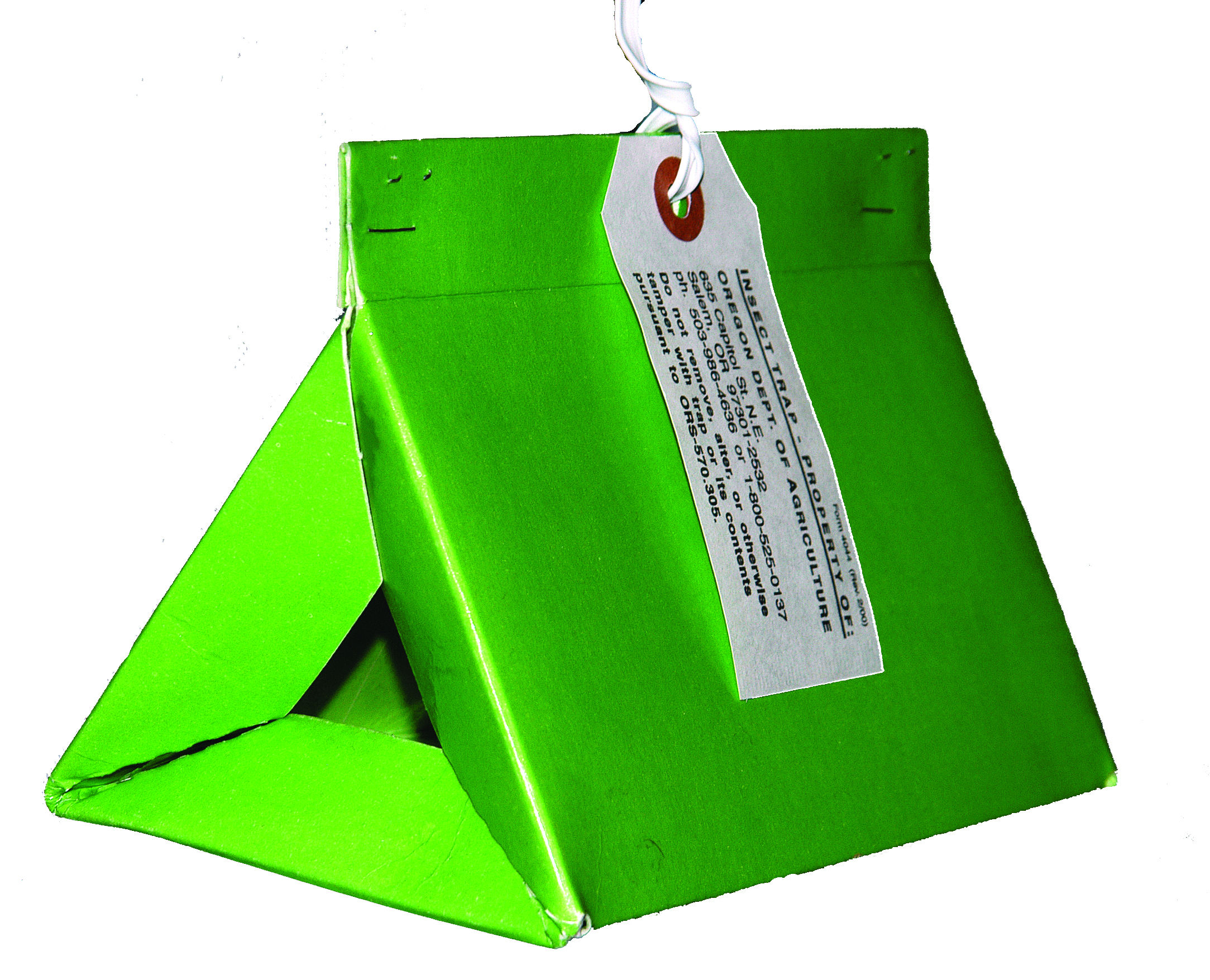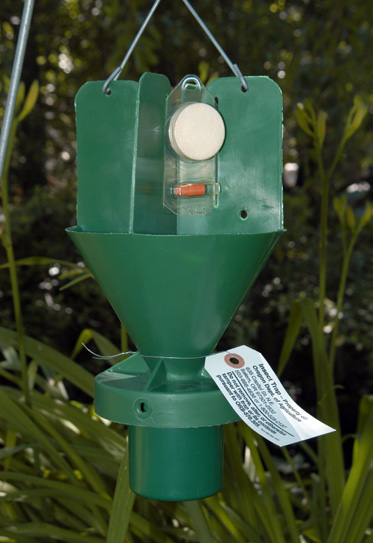What are we looking for?
Each summer, the Insect Pest Prevention and Management (IPPM) Program conducts surveys for insect pests not known to occur in Oregon, such as
These are serious pests in other parts of the world and could threaten Oregon's agricultural and horticultural industries, landscapes, forests, and recreational areas. Early detection allows IPPM to manage these pest problems proactively.
What do the traps look like?
There are various trap types set by IPPM:
- Moth traps, such as the
spongy moth trap, are made of heavy paper and are tent-shaped with sticky inner surfaces. These hang from a variety of deciduous tree hosts

- Japanese beetle traps are green with a funnel and a catch can. These hang on a metal pole set into the ground near hosts such as turf, roses, or grapes.

- Some IPPM insect surveys for pests, such as
Asian longhorned beetle, are visual because no traps exist to monitor them. Survey technicians visually inspect host trees for signs of damage.
How do the traps work?
Most of the traps used in our surveys are baited with a synthetic female sex lure called a pheromone. The Japanese beetle trap has floral food lure in addition to the pheromone lure. Traps are placed in areas where there are suitable food plants for the target insect. When the target insect also occurs in the area, adult males are attracted to the lure and are trapped.
Are the traps dangerous?
No, the traps are non-toxic and do not contain any insecticides. However, it is best not to allow children or others to play with or disturb the traps or lures.
How can you help?
- Report any suspect pest insects to ODA. If possible, catch the suspect insect(s) and place it in a container for identification.
- Give us permission to place insect traps on your property.
- Observe quarantine regulations for insects such as spongy moth, Japanese beetle, and emerald ash borer by not moving infested materials into the state.